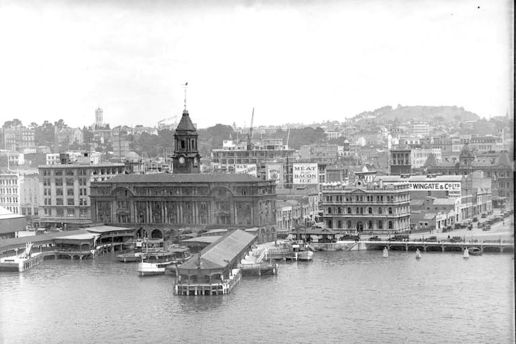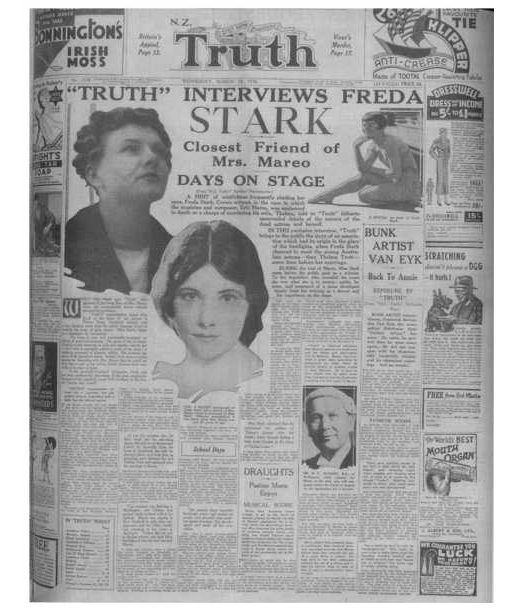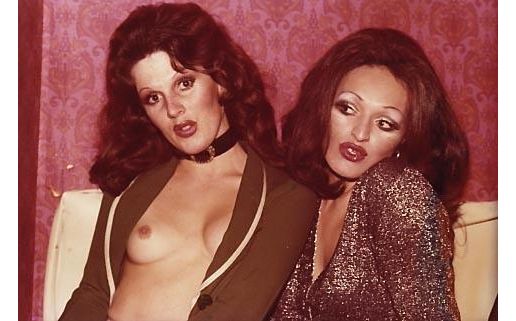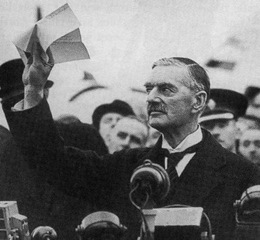The printed programme for this year's Auckland Pride Festival includes a history of gay Auckland, written by David Herkt. What follows is a longer, looser, less well-behaved version of that history adapted by David especially for Public Address. We are pleased and proud to have it.
Cities all have human histories, but the gay, lesbian, bisexual and transgendered stories from the past often remain hidden – and Auckland is no exception, even today.
One night in 1894, two men, after meeting each other in Wellesley Street in the central city, travelled out to Henderson and checked into the Falls Hotel together. The hotelier became suspicious and loitered about their room door. Hearing sounds he described as “oh ah!”, he thought they indicated a “person under pressure”, so he burst into the room…
All sexual relations between men in New Zealand, no matter the type of sexual act, had been criminalised the previous year, so the men were charged and ended up in court.
“We were only kissing each other after waking,” one of the defendants said in his defence.
But who remembers these long ago incidents?
Moving through Auckland City today, there are no public monuments to queer people. There are no books or websites that tell us about our particular past. Time in Auckland City appears to be a very, very straight thing.
Driving by the Ferry Buildings on Quay Street, it is impossible to know that this once was one of Auckland’s great gay cruising grounds in the late 19th and early 20th Century, used by gay men and male sex-workers alike, gathering after the evening commuters had streamed through the turnstiles to catch ferries to Devonport and the North Shore in that pre-Harbour Bridge era.
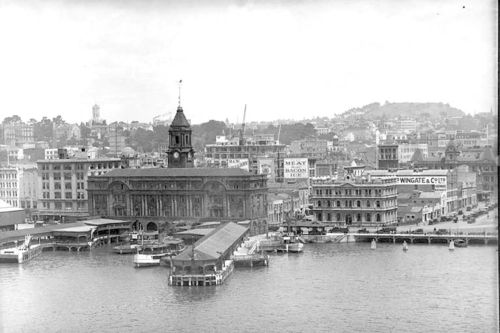
“It interested him, after nightfall, to see two boys with painted flaring lips and limpid eyes, hanging about the Ferry Buildings…” wrote Robin Hyde in her 1938 novel, Nor The Years Condemn. “Place is lousy with them,” explained a labourer, tapping his pipe on the heel of a well-worn boot. “We call ’em the bitches.”’
In the 1970s, a drab car-park off Grey’s Avenue once led to the discreet entrance to Backstage, an illegal club, where after being scrutinised through a peep-hole, hundreds of men and women would dance behind locked doors to Donna Summer and Boney M until 5am.
And who remembers the KG Club – the Karangahape Road Girl’s Club or the Kamp Girls Club? It was New Zealand’s first ever lesbian social club, founded by Raukura Te Aroha “Bubs” Hetet, in late 1971. It met in a variety of private homes before opening in Beach Road and then moving to the corner of Karangahape Road and Hereford Street, where it had a sterling reputation for boisterous parties.
We also have forgotten the long and proud history of Auckland drag and transgendered performance, with stars like Noel Mackay in the late 1950s and 60s, and venues like Mojo’s on the corner of Queen and Wakefield Streets in the 70s, whose performers like Diana, Sheila and Jackie were memorialised in the images of Taranaki photographer Fiona Clark, and where sailors from ships would queue on the back stairs for other ‘entertainment’ purposes…
And if we do not know these places, people and events, how can we say that we know our city?
The history of same-sex relations in pre-European New Zealand has seldom received much attention. It was not valued or recorded by early observers, and more lately political and ‘moral’ decisions have meant that it has not been explored.
Despite the Tāmaki isthmus being a centre of Māori settlement for centuries, we have no knowledge of the diversity of sexual behaviours of its people, beyond the presumption that these may have mirrored the better recorded sexual lives of the Pacific Islands, where same-sex relations were barely worthy of comment and there were gender-roles available that did not reflect physical attributes.
The activities of the early missionary William Yate with Māori males in the 1820s and 30s in Northland indicate that same-sex relations were not regarded as an issue by Māori, and they were fully familiar with homosexual acts before the arrival of Europeans. The significance of these encounters, however, remains unknown to us.
Located on the glittering Waitemata, with its signature volcanic cones, Auckland has always been a port city, founded on its access to the sea. Henry Winkelmann, an avid sailor, was one of the first photographers to record the early life of the harbour and the changing urban landscape in the late 19thand early 20th centuries.
He also left behind more intimate photographs of his male friends posing together or swimming nude. In one of these, Winkelmann photographed himself in a “full passionate lingering kiss on the mouth” with a friend, Charley Horton, in 1900, while the pair sprawled in the shadow of a yacht’s sail.
Later, this photo was stolen from Auckland Museum, then eventually returned, and controversially used on the cover of Peter Well’s 1997 anthology of New Zealand gay writing, Best Mates.
Auckland is also a city of shores and beaches. Near-forgotten homosexual writer, Hector Bolitho, in his 1927 novel, Solemn Boy, recorded the confusions of a gay male encounter between two naked men on the black sand of a West Auckland beach: “We hadn’t the courage of gulls, swooping down and deliberately taking what we wanted. We fumbled and compromised with ourselves… we were cowards to ourselves.”
Auckland pubs and hotels begin appearing in court documents and newspaper reports as places where men could meet and bed each other. Walter Smith reported his lover Albert Elworthy to the police after a heated argument in 1921. The couple had often shared a bed at the Waitemata Hotel in Lower Queen Street, which appears to have been a place where gay men felt comfortable, to judge by its appearance in another trial which featured upstairs rooms, drinking, singing and sexual contact. The hotel porter would run messages between couples and the owner of the hotel testified, “At Christmas time our double beds were full of men together.”
Another man who recorded early gay life in Auckland was the writer Frank Sargeson, who lived in a bach on Esmonde Road in Takapuna from the 1930s until his death in 1982. Sargeson changed his name from Norris Davie after being arrested in Wellington in 1929, when his sexual relationship with another man was discovered.
He wrote a number of his famous short stories in the 1930s and 40s in Takapuna, including That Summer and A Great Day, where gay relationships stir just beneath the surface of male friendships, and sexuality erupts in strange and inarticulate ways.
Sargeson’s recording of transient gay life, and an Auckland of rooming houses, trams and sun-struck streets in his short-stories remains one of the most accomplished achievements of New Zealand literature.
“I wanted to say something, but I didn’t know what it was, and couldn’t say it.
Terry, I’d say.
And he’d sort of grin. And sometimes I’d take his hand and hold it tight, and he’d let it stay in my hand, and there’d be a faint grin on his face.”
In counter distinction to these muffled gay lives, the career of the stage performer, Freda Stark, gives us a glittering glimpse into Auckland’s lesbian and Bohemian life.
In the 1930s, Freda had had fallen in love with Thelma Trott, who was married to an orchestra conductor, Eric Mareo. The relationship between the trio came to its climax when Thelma died from an overdose of a sleeping drug.
Mareo was charged with Thelma’s murder and convicted, but Freda was outed as a lesbian during the trial when nude photographs of her were sensationally produced by the prosecution.
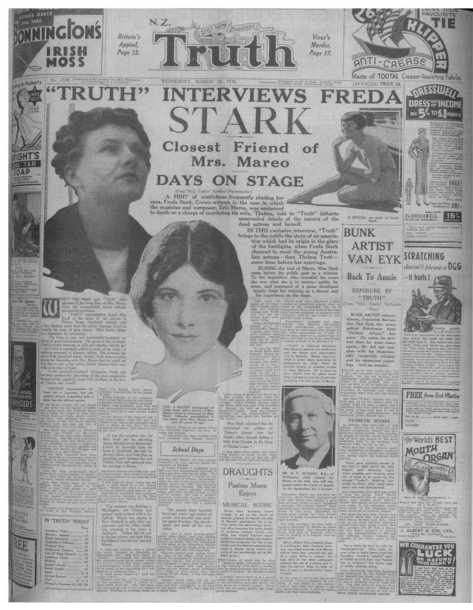
Later, during the Second World War, Freda became notorious for performing her ‘Ritual Fire-Dance’, near-naked and covered in gold paint, on the Wintergarden stage of the Civic Theatre, for audiences of American servicemen.
The arrival of these American troops brought a whole new ambience to Auckland. There was chewing-gum, bourbon and swing music, but some soldiers were also gay. It has been suggested that these troops introduced New Zealand gay men to the blow-job, something that had never previously been a particular feature of gay sexual relations in New Zealand.
A 1941 trial in the Auckland Supreme Court testified to the availability of American servicemen. Grocer’s assistant Victor Andrews described shop-assistant Bruce Millar’s preference for navy men and reported that ‘there are others round town doing the air-force.’
The same trial revealed the Cargen Hotel on Short Street, and the Commercial on the corner of High and Shortland Streets, as places where it was possible to pick up like-minded men, and described private drag parties on the North Shore and Mount Eden.
Andrews also told of meeting Millar, catching the night-ferry to Devonport and drinking beer and having sex in the Devonport Domain.
Another group of gay men who changed the social life of Auckland, were the stewards who worked on passenger ships and shipping lines. Generally homosexual men, shipping stewards provided international contact and added a whole new element to New Zealand gay life –campness.
These men even used a whole gay language, Polari, which meant they could talk intimately without being understood by the wider world: “As feely ommes...we would zhoosh our riah, powder our eeks, climb into our bona new drag, don our batts and troll off to some bona bijou bar”. Polari words like ‘naff’, ‘nance’, ‘butch’, ‘drag’, ‘mince’ and ‘trade’ still survive in general New Zealand gay usage today.
By 1955, an Auckland University magazine was publishing photographs of all-male weddings in Parnell and Point Chevalier, and coffee bars including Blake’s Inn on Vulcan Lane were patronised by the ‘artistic and temperamental’.
A number of city hotels of the 1950s and 60s had firm reputations as gay venues. The back bar of the Great Northern in Customs Street East was nicknamed ‘The Lilypond’ and pianist Billy Farnell was notorious for driving around the city in his red MG sports car, in full make-up, pulling up in front of the Occidental Hotel on Vulcan Lane for a late-afternoon drink. There was also the Shakespeare, on the corner of Wyndham and Albert Streets, where the upstairs bar was a watering hole for both journalists and gay men.
Drag stars of that time, like Noel Mackay, occupied a curious place between public acceptance and illegality. For men, wearing woman’s clothing in a public place could be construed as being against New Zealand law, and drag queens and trannies were often arrested.
MacKay performed at clubs like the Montmartre in Lorne Street and the Peter Pan Cabaret in Upper Queen Street. He released a series of surprisingly successful record albums filled with smutty innuendo and camp classic songs like A Good Man is Hard To Find. Other entertainers like Diamond Lil (Marcus Craig) would follow his lead.
It was also an era of gay men meeting and having sex in public toilets, which were frequently located underground, like those in Wellesley Street or Durham Street West. The long stairs down in many of these venues were sufficient to give a warning of any new arrival. There was a developed system of social roles, including that of a ‘look-out’ or ‘pegger’, as it was known, often taken by the voyeuristically inclined.
Men could also have discreet sexual intimacy in bath-houses and saunas like the Gladiator on Queen Street, with its owner with his brylcreemed hair and its wall décor of record covers, the Jeunesse Doree in Mt Albert, or the Victoria Spa in the city.
But the 1960s brought a new radicalism. The old rules were about to be challenged.
Gay Liberation had its first meetings at Auckland University in 1972. Led by Ngahuia Te Awekotuku, Nigel Baumber, Dick Morrison and Malcolm McAllister, this group demanded repeal of the anti-homosexual laws and complete equality for all New Zealanders, no matter their sexual preference. Meetings established a core-group and regular Gay Liberation dances in the University café provided a new type of social interaction and represented a new visibility.
For the first time, the New Zealand television audience also began to see acknowledged homosexual, lesbian and transgendered people in current affairs programs, calling for law-change and an end to discrimination. The first public demonstrations for equal rights marched up Queen Street.
This sense of freedom was responsible for the creation of Auckland’s biggest and most successful gay club to that date. Backstage, just behind the Auckland Town Hall, was opened in 1976 by Stan Gordon and Lew Pryme, a popular and successful singer, who would later become Executive Director of the Auckland Rugby Union.
Backstage covered two stories and worked on a system where an entry fee of $7 covered the night’s drinking. It was the height of the disco era and the dance floor hustled with over 200 people a night. It was also an illegal venue and its opening hours, until 5am in the morning, were a novelty for Auckland. Backstage can be glimpsed in New Zealand’s first gay feature movie, Squeeze, directed by Richard Turner, which was partially filmed in the club in 1979.
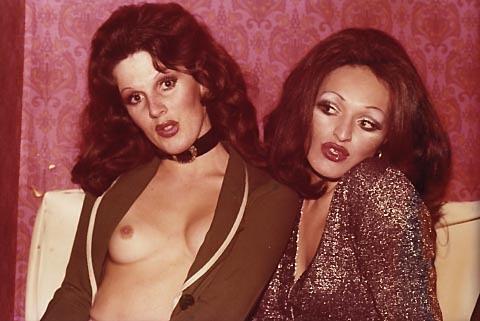
Meanwhile on state-funded television, Auckland gay couple Peter Hudson and David Halls were creating a cooking series that became one of New Zealand’s highest rating programmes. Hudson & Halls would run from 1976 to 1986 and would create a new visibility for gay men in middle New Zealand, despite the TV publicity answer to the obvious question: “We’re not sure if they are gay, but they certainly are merry.”
Following the canning of the Hudson & Halls series by TVNZ, the couple tried a UK version of the show but were dogged by immigration restrictions. Halls died of cancer in 1992 and Hudson committed suicide eighteen months later.
The campaign for law change still continued and was extensively financially and organisationally backed by Tony Katavich and Brett Sheppard, the owners of Out! magazine, Alfies nightclub (which featured Nicole Duval and a young Georgina Beyer, amidst other performers), and a chain of gay saunas in Auckland, Wellington and Christchurch.
Katavich and Sheppard publicised the campaign, working alongside men like Bruce Kilmister and groups like the Auckland Gay Task Force.
It wasn’t until 1986 that the anti-homosexual laws were repealed – but not before more than a third of New Zealand’s population had signed a petition asking for the old laws to be retained. It was an issue that divided the nation and the final knife-edge parliamentary vote on the bill was followed intently by the gay community.
The victory was ushered in by a “party to end all parties” at Alfies, the club located under Imperial Arcade, off High Street, where a packed venue, disco-whistles, streamers and a countdown signalled the moment of change.
But HIV/AIDS had also arrived. The next ten years would be a period of trial and distress.
Bruce Burnett led the community’s first response to the virus and, in the face of government inaction, founded the grassroots AIDS Support Network inaction to give gay men the vital health information they needed in order to protect themselves. This group would change its name to the New Zealand AIDS Foundation in 1985, and is now based in its own building on Hargreaves Street, St Mary’s Bay.
Auckland would lose a number of its most prominent gay men to the epidemic, including Lew Pryme, the co-owner of Backstage, who featured in an explicit and moving television documentary screened just after his death; bodybuilder and photographer Neil Truhubovich; and John Draper, a designer and agent-provocateur who had established Room Service, one of Auckland’s most radical art galleries, and founded the glossy GLO magazine.
These deaths and many, many others are memorialised by panels in the AIDS Memorial Quilt, now at Te Papa.
Eventually, the effects of HIV/AIDS would be partially contained by new medications. Risky sexual behaviours would be changed by public campaigns. The virus, however, still remains a threat.
The first HERO Party was organised in 1991 to celebrate and reinforce the bonds of a community that had been severely battered. The inaugural party was held in the Rail Shed on Beach Road. The second party on Princes Wharf was attended by 3,000 people and artists like Mika performed in a series of spectacular shows which would become a HERO tradition.
The Hero Parade in 1995 moved up Queen Street, the second was along Ponsonby Road. By 1998, around 150,000 people would crowd the Ponsonby Road route to watch a spectacle which would be televised and promoted as a tourism feature of Auckland City.
However, lack of civic support and financial issues meant that the original Hero organisation was forced to wind up in 2002.
Following law-reform, the most notable trend was the fact that the queer communities gained many formal organisational structures and attributes. It was time to come in from the cold. Businesses grew, service groups were created, and social life began to reflect broader concerns.
New nightclubs like Aquarius, Staircase, Legend, Don’t Tell Mama, Midnight Club, Klamp Klub, Queen’s Ferry, Flesh, G.A.Y. and Family opened, giving gay, lesbian, bisexual and transgendered people a wide variety of entertainment venues.
Staircase would come to be regarded as one of Auckland’s most iconic gay clubs, and was the home of influential Pacific drag divas Bertha, Buckwheat, Tess Tickle and the late Bust-Op. It had three distinct incarnations – first Fort Street, with its black sunken dance floor; then Albert Street, with its beige rag-rolled walls; and finally as a superclub on Karangahape Road.
Queen’s Ferry, G.A.Y. and Family were part of an entertainment empire run by Wayne Clark, with Miss Ribena as the trademark host of their comprehensive entertainment programme, running the gamut from Mr Gay Auckland and karaoke to show nights and drag competitions. It was pub-culture made gay and, despite its critics, remains an essential and profitable part of present-day Auckland.
Different niches within the gay community also started to grow their individual strengths. Urge Bar, opened by Peter Taylor, Larry Quickenden and Phillip Stack in 1997, began as a leather bar but has now evolved into a practical and relaxed men’s space. Urge is presently New Zealand’s longest-running gay men’s bar.
Sex-on-site venues like Lateshift in Dundonald Street, with its blue-collar décor of oil-drums and pool-tables, and the Countryman’s Institute on Beach Road, with its chain-link and corrugated iron, became new features of Auckland life in the 1990s, and fostered a unique local sexual culture. For a small price men could guarantee a sexual encounter with another in safe and discreet surrounds.
Meanwhile, the lesbian community was following its own individual trajectory. Lesbian social groups became abundant, from softball teams to walking groups, with frequent women’s dances and drag king events in a variety of venues including Kamo on Karangahape Road. The Charlotte Museum in Western Springs was also created to preserve and remember New Zealand’s lesbian history.
Auckland developed a thriving gay and lesbian media. The monthly Tamaki Makaurau Lesbian Newsletter was first published in 1990, and a fortnightly gay newspaper, Man to Man, later renamed Express, was founded by Lateshift owner Jay Bennie in 1991. JACK magazine was a glossy feature magazine of the early 21st Century, with original photographic features, high production values, and an acute awareness of gay culture and sensibility.
There were gay radio programmes on stations like bFM and Planet FM, and television programmes like the long-running, Queer Nation, produced by Johnny Givins. Jay Bennie’s GayNZ.com would be the first step into an internet age, followed by Express Online and any number of small service websites.
Auckland was also gaining broader cultural influences. Fa’afafine joined Fakaleiti and Takataapui in becoming an increasingly prominent element in Auckland’s queer life. The socio-sexual cultures of the Pacific Islands created a unique ambience in Auckland following the great migrations of Pacific Islanders to New Zealand in the 1970s and 80s, and it was often manifested in particular suburbs. Many drag stars of the 1990s, for instance, received their first public exposure in the Miss South Auckland Drag Competition in Papatoetoe. Winners, including the late Bambi Slut, went on to establish a large audience in inner city clubs.
By the end of the 20th Century, the Queen City had come of age as the queer capital of New Zealand.
The Gay Auckland Business Association held regular social meetings and raised funds to support other gay, lesbian and transgendered organisations through an annual auction. Whole teams of gay, lesbian and transgendered sportspeople travelled to international events, like the 2002 Sydney Gay Games. The Pride Centre, and then Rainbow Youth, opened offices on Karangahape Road, which had become the cultural centre of Auckland gay life.
These communities were they also coming to terms with the fact that they were no longer a reviled minority and realised that, if they wished to keep an identity that had been created through legal and social oppression over the course of two centuries, they needed to work to maintain their unique culture and to remember its long history.
Could a community whose attitudes were created in opposition against a prevailing and dominant homophobia, survive in a world where gay weddings are not an aberrant spectacle but a socially-accepted feature of human relations? Is queer culture relevant in a world where sexual customs are tending towards a homogenised melting-pot? What happens to sexual minorities when there is no longer an oppressive majority? If there is no homophobia, is there a queer community?
These are the questions the new millennium in New Zealand must answer.
---
See image gallery for photo credits and captions.

